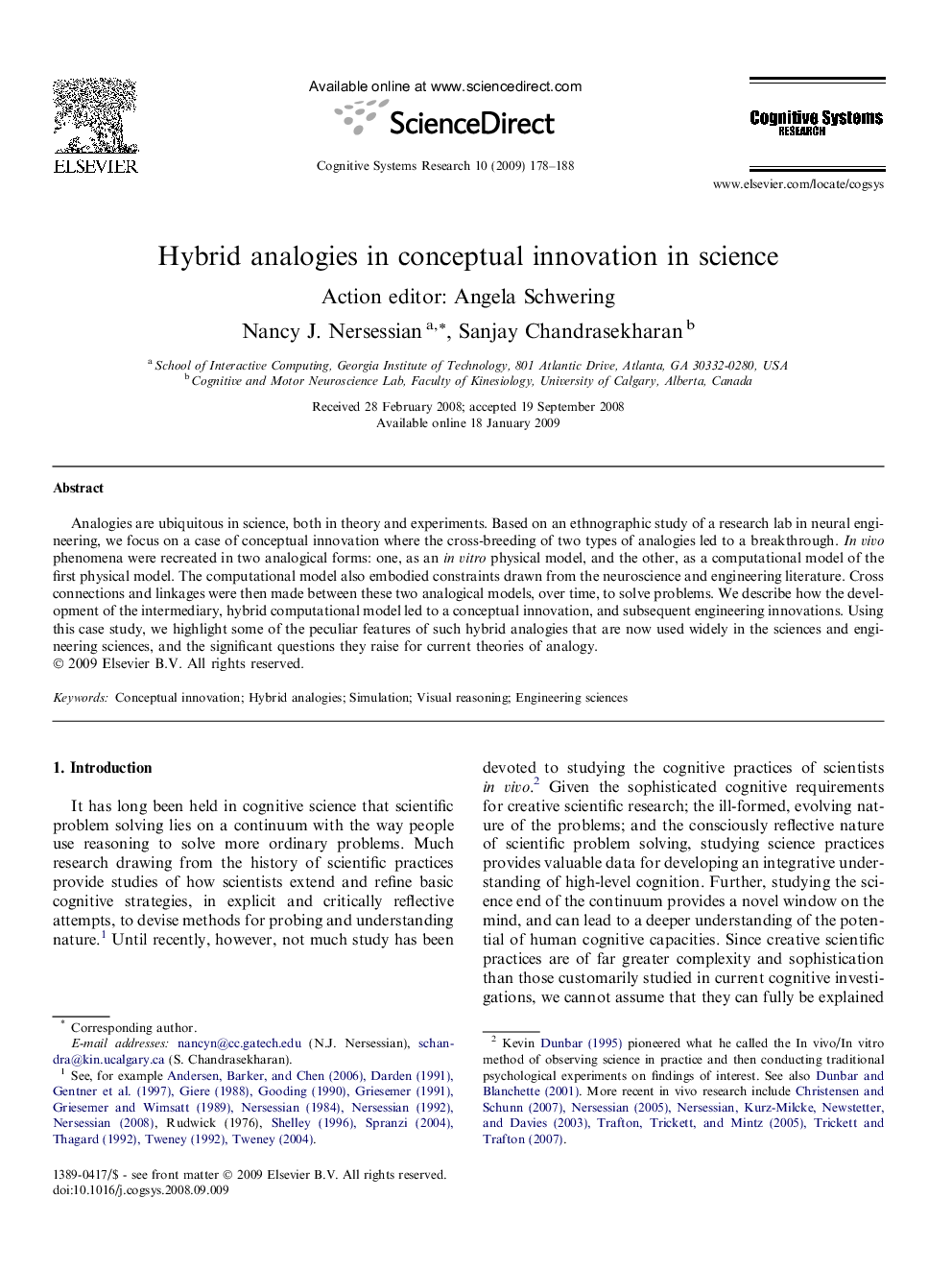| Article ID | Journal | Published Year | Pages | File Type |
|---|---|---|---|---|
| 378563 | Cognitive Systems Research | 2009 | 11 Pages |
Analogies are ubiquitous in science, both in theory and experiments. Based on an ethnographic study of a research lab in neural engineering, we focus on a case of conceptual innovation where the cross-breeding of two types of analogies led to a breakthrough. In vivo phenomena were recreated in two analogical forms: one, as an in vitro physical model, and the other, as a computational model of the first physical model. The computational model also embodied constraints drawn from the neuroscience and engineering literature. Cross connections and linkages were then made between these two analogical models, over time, to solve problems. We describe how the development of the intermediary, hybrid computational model led to a conceptual innovation, and subsequent engineering innovations. Using this case study, we highlight some of the peculiar features of such hybrid analogies that are now used widely in the sciences and engineering sciences, and the significant questions they raise for current theories of analogy.
